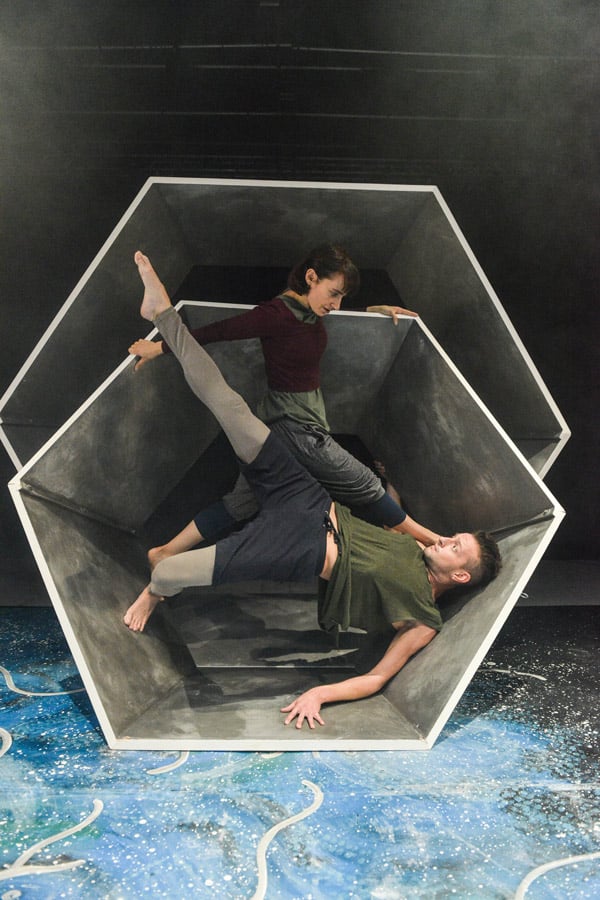
Getting Better Slowly
New Diorama Theatre
3 October
4 Stars
One morning Adam Pownall woke up to find his body slowly, but surely, shutting down. It started in his limbs, before moving onto his chest, his face, and eventually robbing him of the ability to talk or even blink. The culprit? Guillain-Barre syndrome, a rare disease that causes complete paralysis within days of contraction. Now through a largely physical piece, Adam tells his story. There is science here for those who want it, but there is also a vast amount of humanity.
As well as being the creative producer, Pownall himself stars in the show, which brings a real sense of sincerity and endearing vulnerability to the role of ‘Adam’, a fictionalised version of himself. This makes it especially touching when he talks about his family, particularly his mother’s guilt over nagging him to take the bins out and Adam’s desperate wish for his brother to stop being so unusually nice and just take the mick out of him like normal.
The audience empathises and champions his recovery as much as the figures in his story do, and although his very presence onstage is a spoiler of his recovery, there are moments of genuine uncertainty, where even the audience forgets that Adam’s survival is assured. It helps that both Pownall and his co-star Kitty Randle are both immensely likeable. The pair takes advantage of the intimate theatre to meet their audience’s gaze, connect with them and even address them directly.
Where Pownall really thrives as an artist, however, is conveying pain – bodily, debilitating pain. He portrays it superbly and there are moments wherein he looks ready to pass out from the excruciating agony he is suffering. His physicality is extraordinary, even more so when he recounts the state of decay his body descended into during a long spell in intensive care. The physical nature of the play displays another victory – Adam tells his story through the movement that was robbed from him.

Randle, who notably takes on the role of the illness as well as a wide range of background characters, is like a malicious sprite, darting about the set and using Adam as a climbing frame. A plaything. As Guillain-Barre syndrome, she wheels between taking morbid delight in the suffering she causes and being slightly taken aback by her own strength, like a petulant child who never really meant to hurt anyone, not really – or did she? Either way, Randle turns in a fascinating performance and well matches Pownall’s physical ability.
Nick Wood’s script is gleaned from hours of taped conversation with Adam, friends and family. Wood thankfully steers well clear of the saccharine, despite bordering on overly earnest at several points. Thankfully Pownall’s own colloquial style shines through, as do the tones of his family to create something too genuine to disregard. The dialogue is initially a little stilted as the two performers warm to the performance, but ultimately the honesty of the play wins out, becoming easy and conversational as Pownall and Randle racket through the just over an hour long performance.
Elsewhere Howell Thomas’ lighting design is practically seamless and pleasing to witness, which more than compensates for the fairly clunky set design. Tilly Branson’s direction keeps things moving at a fine pace, and suddenly the whole thing is over long before the audience wants it to be.
Overall, Getting Better Slowly’s main strengths lie in its performers and the sheer amount of heart in its story. It takes place in a small world, but ultimately one that is perfectly formed and we can all recognise a place we would take in it. As for Pownall’s goal to raise awareness of Guillain-Barre – it is thoroughly fulfilled. And he’s created a remarkable show along the way.
